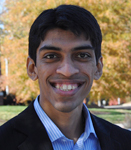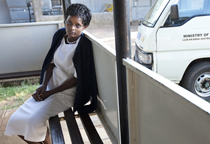
Removing the Blindfold: Mapping Health Worker Schools to Improve Education
 The transformative scale-up of health worker education can be like the game of pin-the-tail-on-the-donkey. We know so little about health worker education that it often feels like we’re playing blindfolded.
The transformative scale-up of health worker education can be like the game of pin-the-tail-on-the-donkey. We know so little about health worker education that it often feels like we’re playing blindfolded.
Recognizing that we can’t really transform health worker education until we know where health schools are located, the World Health Organization organized a panel at the Second Global Forum on Human Resources for Health in Bangkok to discuss global mapping of health worker educational institutions.
I was invited to speak about the mapping of nursing schools.
Geographic information systems
The potential for the use of technology stands out as a beacon of hope in the mapping of health worker educational institutions. Besides the basic mapping functionality that geographic information systems (GIS) offers us, we would also be able to identify catchment areas from where students are enrolling in these institutions and track the movement of health workers after graduation. As a policy tool, mapping holds great promise in devising plans that solve rural-urban disparities.
Mapping health worker education
The panel agenda was a revelation by itself. While the other speakers on the mapping of health worker cadres were called upon to provide updates, I was tasked with presenting the “Proposed plan to map nursing schools.” Although the data on other cadres are by no means complete, nursing education is still at the beginning. CapacityPlus hopes to address this gap through the activities surrounding the Nursing Education Partnership Initiative (NEPI).
Collecting the data
- Dr. Fitzhugh Mullan, lead author on the Sub-Saharan African Medical Schools Study, reported that the study has changed the world’s understanding of how medical education in sub-Saharan Africa is carried out.
- Diane Gal, project manager of the International Pharmaceutical Federation, described the still-nascent efforts to map pharmaceutical schools globally.
- Silvina Malvarez, regional advisor for Nursing and Allied Health Personnel Development at the Pan American Health Organization (PAHO), spoke about PAHO's efforts to collate information on the region’s nursing schools.
 Prior to their presentations I was unaware of these data collection efforts. It brought into sharp relief the need for greater collaboration with partner organizations, especially in view of CapacityPlus's commitment to supporting communities of practice.
Prior to their presentations I was unaware of these data collection efforts. It brought into sharp relief the need for greater collaboration with partner organizations, especially in view of CapacityPlus's commitment to supporting communities of practice.
I structured my presentation by asking the audience for their perspectives on the types and sources of data that CapacityPlus should look for. From the participants, I gleaned a few interesting perspectives including an assurance that we would find a significant portion of our desired data with professional councils and accreditation bodies within the countries. This represents an important opportunity to tap into existing data and prevent duplication of effort.
Improving nursing education
Through NEPI, CapacityPlus hopes to leverage this opportunity in order to help educate a generation of nurses equipped to deal with the health challenges of the 21st century. Understanding who those nurses are and what they study is an excellent first step in the right direction.
Related items:
Photo 1 by Jennifer Solomon. Photo 2 by Trevor Snapp. (Lugari District Hospital nurse, Kenya)


